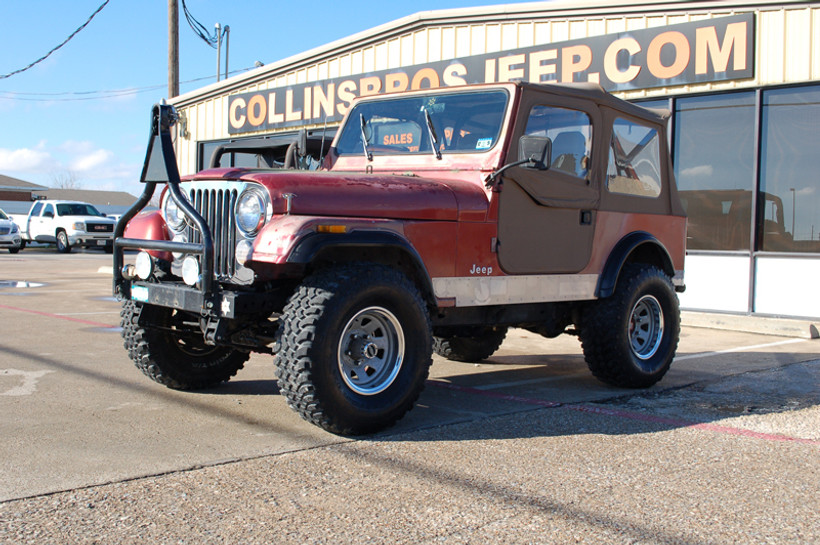The Jeep CJ was a specific line of the Jeep brand that included small, open-bodied off-road vehicles and compact pickup trucks. CJ stands for "civilian Jeep," and it was eventually replaced by the Jeep Wrangler model in 1986. Nevertheless, the Jeep CJ has a rich history. Read on to learn how the Jeep CJ was instrumental in the development of the Jeep brand.
History and Evolution of the Jeep CJ brand
The beginning of civilian uses for Jeep vehicles occurred in the year 1942 when the U.S. Department of Agriculture tested Jeeps for use as tractors in farming operations. The success and popularity of Jeeps in agriculture prompted the brand to develop a civilian vehicle with similar features. Over time, this evolved into the popular line of Jeep CJ vehicles. After 1942, the Jeep CJ went through several evolutions. Here's an overview of how it changed over the years and some benefits that came with each model.
Jeep CJ-2A
The first few prototypes of the Jeep CJ weren't sold or mass-produced. Eventually, the Jeep CJ-2A began production in July 1945. This first model included many of the basic features modern Jeeps have, including a tailgate, a draw-bar, a front grille, and an open top.
Jeep CJ-3A and CJ-3B
Production and distribution of the Jeep CJ-3A began in 1949. This model had the same engine, gearbox, and transfer box as the CJ-2A model. The major changes with the 3A included upgraded suspension, a shortened rear wheel-well, and increased waterproofing of the canvas top.
In 1953, the CJ-3B model was introduced. This model included upgrades to the engine and power of the vehicle. The larger engine required a taller grille and hood, which gave the CJ-3B a distinct appearance.
Jeep CJ-5 and CJ-6
In 1955, the CJ-5 entered production. The CJ-3B also remained in production during this time. The CJ-5 model featured a short wheelbase and sport model design.
The CJ-6 model included a long wheelbase to fit the new features and parts of the larger engine. These models were the first to use a four-cylinder diesel engine and included options such as power steering, a V-6 or V-8 engine, and additional horsepower. The CJ-5 and CJ-6 furthered the Jeep brand's reputation as a powerful, reliable, and stylish vehicle for everyone.
Jeep CJ-7 and CJ-8
The Jeep CJ-7 was in production from 1976 to 1986. This model was 10 inches longer than the CJ-5 vehicles. It also featured rear rails to extend the suspension and increase stability. The CJ-7 provided improvements, benefits, and options such as automatic transmission, a hard top, an increased cargo area, and optional four-wheel drive. This model was designed for the modern consumer with added power and functionality.
The final model of the Jeep CJ line was the CJ-8, also called the Jeep Scrambler. Additional features included a removable top, flatbed storage, and higher gas mileage. The Scrambler was a compact pickup truck model with part-time four-wheel drive and options for both automatic and manual transmissions.
By the end of the CJ model's production, the Jeep brand had established itself as a multi-purpose vehicle suitable for a wide variety of needs and activities. Many of the benefits and improvements from the CJ models remain prominent in other models, such as the Jeep Wrangler and Jeep Gladiator.


